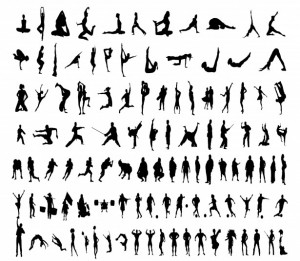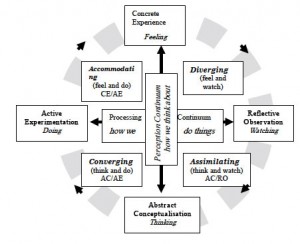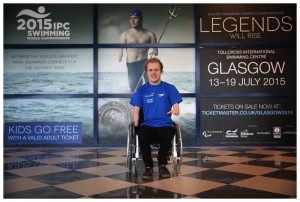By Linda Plowright
If noise levels are anything to go by then school playgrounds, ball parks and bouncy castles all seem to be high octane centres of energy expenditure and yet it still seems difficult to get our children as active as the UK Chief Medical Officers advise (UK CMO 2012 Report, published March 2014).
Meanwhile there is a steadily growing body of research reporting what children say about why they like to be active – “because it is fun” (Visek et.al. 2015 The Fun Integration Theory). It doesn’t seem that difficult to work out ways in which children can experience an hour’s ‘active fun’ each day, however over 75% of primary school aged children fail to meet this physical activity target.
How do children have fun?
Curious to try to find some answers to this seemingly simple question, I conducted a small study observing some 5-11 year olds during their holiday Activity Camp to gain some insight into how they chose to spend their time. I wanted to see what they chose to do and how much physical activity was involved. Videos, drawings and photographs that told the children’s story of what they loved about their Activity Camp demonstrated that being with friends was key to their choices. With friends they developed and sustained highly imaginative and creative fantasy games. The power of being with friends has been highlighted in a number of studies, particularly for girls. See StreetGames’ recent “How to ..” guide on understanding how to harness the impact of socialising to engage girls in physical activity (Friendships How to guide). In addition children appeared to be motivated by novel equipment and environments. They fully exploited large equipment that probably wasn’t usually available to them comprising a bouncy castle, giant sponge building bricks and ride-in cars. They appeared to enjoy a range of physical sensations, bouncing, going upside down, racing around pushing cars and having rides. Novelty also existed in the space available – a large fully equipped sports hall – and other children and play scheme leaders who the children engaged in their activities allocating them roles and tasks.
What do we mean by ‘active fun’?
What children showed and talked to me about active fun had the following ingredients:
• Opportunities for the children to interact – often noisily and in role play – with their friends: a time to chat and socialize, encourage one another, banter and make noise. These elements are often alien to a learning or coaching environment which is what differentiates ‘active fun’ from PE or sport participation most starkly.
• Opportunities for children to let their imaginations drive the activity, where they choose what they do and how they do it: room for individuality, opportunities for children to create the activity themselves with their friends. There must be the opportunity to ‘not’ be committed to the game, to temporarily leave and return at will.
• Something that the children feel competent to engage in: this might mean the activity is extremely simple or it may mean that an environment of carefreeness where taking part provides the fun – ‘failing/losing’ in the activity is as much fun as ‘achieving/winning’. Play may be entirely collaborative. In the context of an hour’s ‘active fun’, keeping it fun is not about teaching new skills it’s about creating a safe environment in which the children’s imagination can drive fantastical creative activity. This does not deny increased competence, can increase enjoyment and commitment when children have chosen to pursue a particular sport. Nor does it deny that having a skilled adult to encourage and assist children to take part in an activity can be beneficial. However these things can also get in the way of fun.
So why is it seemingly so difficult for children to have an hour’s activity each day?
One answer seems to be the age-old problem of adults over-complicating the world. The challenge of encouraging our children to be active for at least an hour a day has resulted in a focus on whose responsibility it is. Neither the PE teacher, the sports coach, National Governing Bodies for sports nor parents can be solely responsible. It needs team work! We should all applaud and learn from simple, fun, cost free initiatives such as St Ninian’s daily mile (St. Ninian’s Primary School, Stirling). At St. Ninian’s every classroom teacher, not just the PE teacher, accompanies their class on a recreational mile’s walk or run each day. It is unscheduled allowing teachers to be spontaneous and creative in how and when they use the break from academic studies. The teacher joins in and the children complete it in their own way – as an exuberant run or a sociable walk. We all need to start thinking how we can weave active fun into our time with children.
Keeping the hour’s daily activity simple, spontaneous, accessible and child-centred seems to sum up the way of developing the physical activity habit for a healthy lifestyle. Games whilst walking to school, active tea-times and novel playground equipment do not require specialist knowledge. Creating opportunities and incentives for children to have ‘active fun’ is best not viewed as a specialist’s responsibility but as a way of life to be encouraged by all those who care for children. Physical activity specialists, whether that is the PE teacher or the sports coach, can then engage children further in their subject. In short “Let the Children Play”.
——————————————————————————–
Linda is a PhD Research student in the Faculty of Education and Language Studies, Department of Childhood, Youth and Sport and Centre for Research in Education and Education Technology at the Open University. Trained initially as a Physical Education specialist she had a 35 year career in sport and recreation management spanning public, private and voluntary sectors. During that time she gained an MBA and MBRM studying as an open learning student with the OU before taking up her current full time research student role.
Linda’s main interest is children’s physical activity and the power of physical activity to enrich health and wellbeing. She is particularly interested in middle childhood and unlocking the power of research with rather than on children to gain insight into their understanding and beliefs. She hopes that with greater insight, new ways may be found for motivating children to develop active lifestyles – for life. As part of her Masters in Research Degree she undertook a small ethnographic pilot study focused on how 5-11 year olds chose to experience physical activity in their recreation time. She is continuing these studies in her PhD.

![Kelsey E ] via Flickr Creative Commons https://www.flickr.com/photos/kelseye/786999279](https://www.open.ac.uk/blogs/OU-Sport/wp-content/uploads/2015/10/786999279_7590bb182e_o-in350-300x171.jpg)








